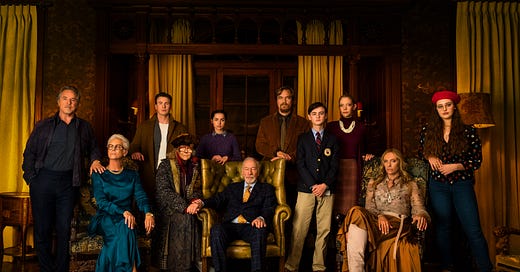How to edit for a better story
So, I got this request
“I could use a 'kill your darlings'/leave it on the cutting room floor lesson about non-attachment in the face of effective storytelling. Something where students put in the work to create three sequences or scenes and then have to cut a section for time.”
When I read this, I had a moment of recognition. We’ve all been there with students, trying to get them to let go of something in their film that just doesn’t serve the story. Often, I’m met with, “But I worked so hard on it, and it’s so good!” That attachment is real, but the story, not the effort, matters to the audience.
This post offers an approach to conversations about "killing your darlings" that balances empathy with practicality.
Thank you, Eric Timmons, for the challenge. Here goes.
Pacing and exposition
Introducing the concepts of pacing and exposition is key to this conversation. Students often recognize pacing issues more easily in others’ work than their own. Start by asking about a film they’ve seen where they would have changed something in the story. Most students identify two key issues:
The scene is confusing.
The scene slows the film down.
These insights naturally lead to discussions about pacing and serve as a great entry point for "killing your darlings."
Does it serve the story?
Here are the questions I use to guide conversations with students:
What is this moment/scene doing for the larger story?
Why do you like this scene so much?
What is this scene trying to do? What is it really about?
Will the audience understand the story without it?
Does this information appear elsewhere in the film?
Could this scene be placed elsewhere, edited down, or referred to quickly?
How does this scene impact the pacing of your film?
Bring this into the classroom
Teach students to critically evaluate and streamline their storytelling, focusing on pacing, clarity, and emotional impact.
Start with a discussion
Ask students if they have ever struggled to cut something they have created. Discuss why it’s hard to let go of work and how it can hinder storytelling.
Show a Knives Out deleted scenes with Rian Johnson’s commentary.
Explore why he cut it and how it fits these guiding questions:
Does it move the story forward?
Does it reveal character or build tension?
Does it serve the pacing or theme?
Practice story mapping
Guide students through creating a 3-scene story using this structure:
Scene 1: Setup - introduce the main character and conflict.
Scene 2: Turning point - highlight the key challenge.
Scene 3: Resolution - resolve or hint at the outcome.
Cutting for impact
Have students evaluate their 3 scenes using a checklist (e.g., relevance to story, pacing, and emotional resonance).
Challenge them to cut or condense one scene while maintaining the story’s clarity and emotional stakes.
Refer to the guiding questions shared in this post while cutting for impact.
Peer feedback
Students present their revised 2-scene story and take questions about the story from classmates to see what can be further cut or possibly needs to be brought back in (because sometimes you also have to revive your darlings).
Teaching students to “kill their darlings” helps them to develop the critical skill of prioritizing the story over personal attachment. Great storytelling isn’t just about what you include, it is also about what you leave out.




